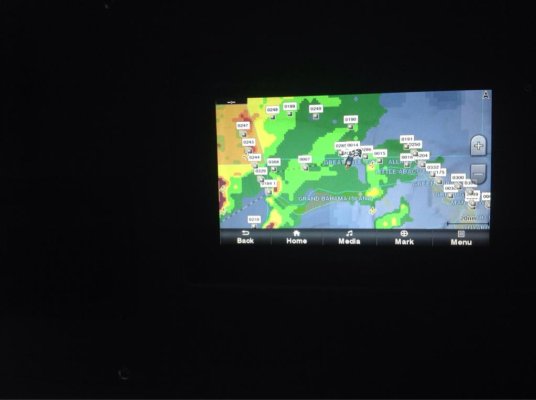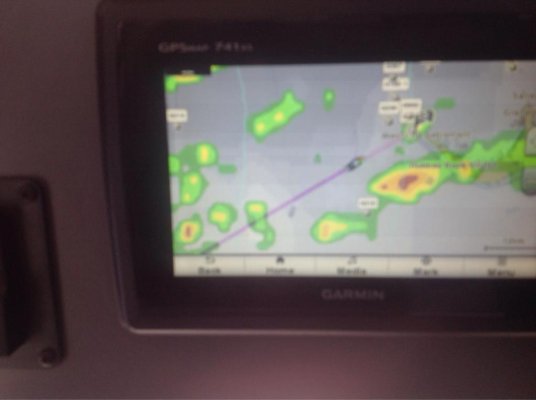High Wire
Guru
No doubt in my mind that the term came from crusty old navy nukes. The official title is the Fission Product Yield Curve.Dang old timers...
Bet we could fill a forum with old expressions totally lost on so many....
Last edited:
No doubt in my mind that the term came from crusty old navy nukes. The official title is the Fission Product Yield Curve.Dang old timers...
Bet we could fill a forum with old expressions totally lost on so many....
What would that be, something like 6' at 1 or 1.5 seconds? A bit extreme.
We did learn when we hit the water the first time in Washington that waves are much different in the PNW. Wind waves plus the swell and often a lot of swell. When we first arrived weeks ago was 4' wind and 10' swell. But then period of swell generally very long. That same day the period was 13 seconds.
From Wikipedia..."
Mary Jane "Mae" West (August 17, 1893 – November 22, 1980)[1] was an American actress, singer, playwright, screenwriter and sex symbol whose entertainment career spanned seven decades.
Known for her bawdy double entendres,..."
Typical NJ coastal forecast has wave height and dominant period. Only recently have they added Swell direction. Up to last year it was wave height and period only. It was up to you to figure out if it was a 5 ft chop or 5 ft swell:
COASTAL WATERS FROM LITTLE EGG INLET TO GREAT EGG INLET NJ OUT 20 NM- COASTAL WATERS FROM GREAT EGG INLET TO CAPE MAY NJ OUT 20 NM- [SIZE=+1]342 PM EDT SAT JUN 21 2014[/SIZE]
[SIZE=+1]TONIGHT[/SIZE] SE WINDS 5 TO 10 KT...BECOMING NE LATE. SEAS AROUND 2 FT. MAINLY IN SE SWELL WITH A DOMINANT PERIOD OF 12 SECONDS.
[SIZE=+1]SUN[/SIZE] E WINDS 5 TO 10 KT. SEAS AROUND 2 FT. MAINLY IN SE SWELL WITH A DOMINANT PERIOD OF 11 SECONDS.
[SIZE=+1]SUN NIGHT[/SIZE] SE WINDS 5 TO 10 KT. SEAS AROUND 2 FT. MAINLY IN SE SWELL WITH A DOMINANT PERIOD OF 11 SECONDS.
[SIZE=+1]MON[/SIZE] SE WINDS 5 TO 10 KT. SEAS AROUND 2 FT. MAINLY IN SE SWELL WITH A DOMINANT PERIOD OF 11 SECONDS.
The part I listen for (on the east coast -- the Gulf of Mexico is a whole 'nother ball of wax) is
Wave height
and
(most important of all)
time between waves
A short duration between the waves means rough seas.
What I look for is 10 seconds between wave heights.
I know from past listening, that once I have the ten second margin the weather will remain okay FOR ME for at least 36 hours.
Anything less than ten seconds and I do not venture off-shore.
Please note: Seaweed is a coastal cruiser and not designed for the type of weather you big guys can handle. I have to be careful.
Here, in the Gulf of Mexico I can discern no pattern for deteriorating weather -- but I've only been listening for 1.5 years. I do know this broken fan belt is costing me a great weather window so I'm not the happiest camper at present.
That weather as noted by high wire is excellent. That's a great forecast.
In addition I think you can add the Delaware Bay to the list of unprotected waters.We ran a bunch up the coast and it was nice to hear swell direction before heading out.
Your DF 44 is probably stabilized if I were you my main concern in a strong thunderstorm would be damage to the Bimini and canvas etc. if you're in the ICW life is easy, on the outside or the Chesapeake , Great Lakes etc weather plays a much bigger role.
In addition I think you can add the Delaware Bay to the list of unprotected waters.
Bill
I'm not even sure a 6 foot, 6 foot crest to crest is even possible....if it is...I've never seen anything close with all my time on/near the water...plenty of bad wave but none at that extreme.
Greetings,
Ah, Mae West...."Come up and see me sometime when I've got nothing on but the radio...."
It's basically what you see on an strong out going tide at a narrow inlet when the wind waves and/or swells are opposing the tidal flow. Or what you can see at the mouth of a river that empties into the sea.
It's basically what you see on an strong out going tide at a narrow inlet when the wind waves and/or swells are opposing the tidal flow. Or what you can see at the mouth of a river that empties into the sea.
I would like to see a picture of some of those.....
Not sure if 6' with 6 sec period is possible. But I would think it would look something like this:
Not sure if 6' with 6 sec period is possible. But I would think it would look something like this:
He wasn't talking 6' with 6 sec. He was talking 6' with 6' between crests. Far different. 6' with 6 seconds we see regularly and that is close for that height but not unheard of.
That's one of the nice features of getting weather data from SIRIUS or GSM Cellular with Garmin plotters. Your screen will turn red in the weather alert area. If you want then you can switch the VHF to the weather channel and listen to the warnings. Since we stopped doing much cruising in the Mainship I shut the SIRIUS WX off and went with the GSM based pay per day weather. It works well in most of the Atlantic ICW. I'll have the same daily service available in my GS. I took the GSM based cellular weather antenna out of the system before the boat was sold. It works via the NMEA2000 backbone you can use the puck alone or a good 800/1900 cellular external antenna mounted nearby with an SMA male connector for extending the range. I understand this service will be going away by 2016. Depending on my cruising I'll keep it until then. You can also purchase an extended use plan short term if needed.
Bill


Glad you are back ok. I often think how fortunate we are to have Seabreeze as a weather predictor, I almost always take their advice over other sources. Do others have something like it?Our current winter weather is much more predictable,..
Adelaide Weather Forecast (Swell, Wind, Tide, Rain & Temperature)
This site graphs the local wind, wave height and wave period, making it easy to make a call. With wave height equalling wave period today (14 feet x 14 seconds),Nope - not a chance.
I believe one thing we have as a huge advantage today is the weather information available.
This view may change on your trip to Alaska.
